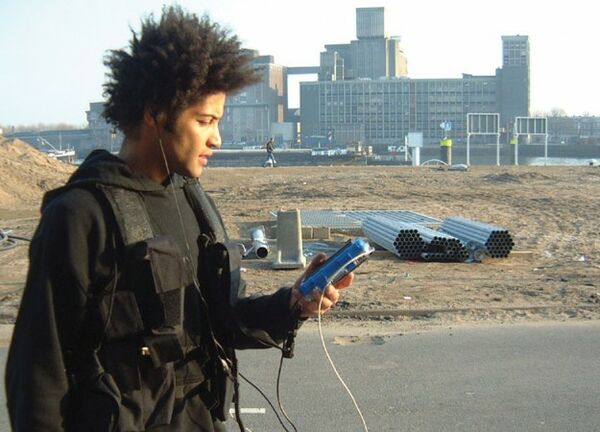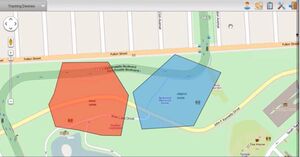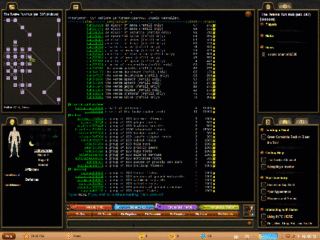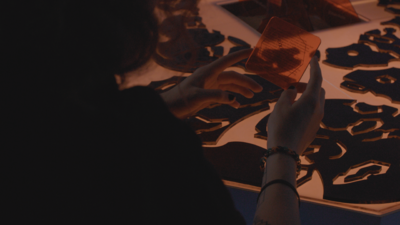Louisa-thesis outline: Difference between revisions
| Line 105: | Line 105: | ||
====Play Tests==== | ====Play Tests==== | ||
Documentation and analysis. | |||
=====EtherAxis===== | =====EtherAxis===== | ||
Revision as of 23:36, 21 November 2021
Draft, 22nd November 2021.
Research Question
How can I suggest alternate ways of urban behaviour in an industrial playground like Rotterdam, moving people to play instead of be played?
Abstract
[150-200 words]
In this thesis I will document the process of building a location-based, pervasive game. The topic revolves around personalised, location-based targeted content under the veil of ludification. By analysing novelty game formats like Alternate Reality Games and Escape Games, and connecting them to methods of targeted advertisement, I am starting a networked narrative through augmentation and modification of physical spaces.
Introduction
[500 words]
Frustrating experience as child of telling reality and dreams apart, core interest in making people doubt if something is real or part of a fiction to feel less isolated in experience. Sleepwalking: being able to move around in a real space without too much issues since the geographical markers are the same, sharing the same space. Creating games in order to activate people and change their state of mind and experience of their environment. Looking closely, everything could be a potential hint. Building on research of text-adventures and targeted advertisement. Making use of the group present and the things everyone could contribute to the game experience instead of making them passive spectators of a work.
[1200 words]
In this chapter I am researching methods game makers as well as advertisers are commonly using to herd user movement to desired areas.
Invisible Borders
Video Game techniques of hiding the map borders, integrating limits of map and unnreachable areas as part of storyline.
in XR, geographical markers are translated into fictional environment to make sure players are not walking against walls or outside of playing field -> wall could look like abyss
“A crucial feature of Blast Theory projects is the ability to extend user and audience affect outside the game - rather than delimiting our consciousness to the stereotypical and virtual, the gameplay pushes us to understand aspects of ourselves, our communities and social responsibility. This is partially achieved by the very visceral gameplay - in CYSMN? the players and gameplay self-generate affects of pursuers and pursued. ... It was encouraging to see Blast Theory awarded the Prix Ars Electronica Golden Nica, which has in the past lauded some commercial, apolitical projects.”
Quote credit: RealTime magazine, Dec03/Jan04 https://www.blasttheory.co.uk/projects/can-you-see-me-now/
Geofencing
Location-based advertisement
"A geofence is a virtual perimeter for a real-world geographic area. A geo-fence could be dynamically generated (as in a radius around a point location) or match a predefined set of boundaries (such as school zones or neighborhood boundaries).
The use of a geofence is called geofencing, and one example of use involves a location-aware device of a location-based service (LBS) user entering or exiting a geo-fence. This activity could trigger an alert to the device's user as well as messaging to the geo-fence operator. This info, which could contain the location of the device, could be sent to a mobile telephone or an email account." [2]
Chapter 2: Take a Leap in the Dark
[2000 words]
Bright Screens & Dark Patterns
"Types of Dark Patterns
❃Bait and Switch.
❃Disguised Ads.
❃Forced Continuity.
❃Friend Spam.
❃Hidden Costs.
❃Misdirection.
❃Price Comparison Prevention.
❃Privacy Zuckering."
The Age of Surveillance Capitalism ~ Shoshana Zuboff
Interactive Fiction meets Surveillance Capitalism:
Surveillance Capitalism spilling into the city streets, leading you to where the algorithm thinks you should be going.
Chapter 3: The Game
[2600 words]
pre-game
Forming a progressive storyline
Geographical markers connect alternate spaces. Playing the game results in subtle changes in public spaces of city
Game adapting to the way its being played.
Creating a visual language and communication methods
Play Tests
Documentation and analysis.
EtherAxis
28th November + 5th December
Development Week TETEM
January or March
in-game
Documentation of actual Gameplay.
post-game
Analysis. I am planning to review the different game methods I have tested and applied and in what ways they have supported the progression of the narrative through lived experience. Based on the results of this analysis I will suggest areas of improvement and propose a future set-up of the game.
Conclusion
[500 words]
Based on my research on methods of location-based advertisement, I will formulate my vision of its potential and dangers, picturing a ludified smart city and celebrating ways of dancing on the structures of its system.
Bibliography
Books
Huizinga, Johan (1955). Homo Ludens: a Study of the Play-Element in Culture. Boston, MA: The Beacon Press.
Turkle, S. (1996). Life on the Screen: Identity in the Age of the Internet. London: Weidenfeld & Nicholson.
Aarseth, E.J. (1997). Cybertext: Perspectives on Ergodic Literature. Baltimore, Md.: Johns Hopkins University Press.
Szulborski, D. (2005). This is Not a Game: A Guide to Alternate Reality Gaming. Pennsylvania: New-Fiction Pub.
Zuboff, S. (2019). The Age of Surveillance Capitalism: The Fight for the Future at the New Frontier of Power. London: Profile Books.
Hoffman, D.D. (2019). The Case Against Reality: How Evolution Hid the Truth From Our Eyes. United States of America: W.W. Norton & Company.
Articles
http://aaaan.net/blast-theory-2/
https://www.playtoearn.online/category/blockchain-gaming/
https://whatis.techtarget.com/definition/geofencing
https://uxdesign.cc/dark-patterns-in-ux-design-7009a83b233c
Games
Blast Theory: Can you see me now? 2001.
Tomo Kihara: Escape the Smart City, 2018.
Roos Groothuizen: I want to delete it all, but not now. 2021.
Further Reading
Mazes & Monsters by Rona Jaffe
Appendix
Game Narrative
I would like to attach the written narrative of the game I built here for further reading.





